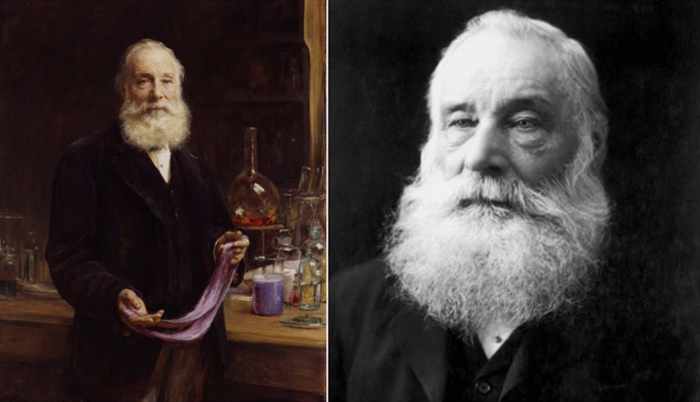![]() Home > Its A Funny World
Home > Its A Funny World
Who Was Sir William Henry Perkin? Find Out About The Scientist Behind Today’s Google Doodle

Sir William Henry Perkin changed the colour of the world (Pictures: National Portrait Gallery/Wiki Commons)
![]() March 14th, 2018 | 12:07 PM |
March 14th, 2018 | 12:07 PM | ![]() 1417 views
1417 views
METRO.CO.UK
The Google doodle for Monday March 12, 2018 is dedicated to the brilliant scientist and east Londoner who changed the world with his incredible discovery back in 1856.
Sir William Henry Perkin transformed the colours of the world by stumbling across the first ever synthetic dye, which had huge repercussions for fashion and industry.
So who was this brilliant man who turned the world from black and white to colour overnight?
Sir William Perkin was born in the East End to a carpenter father and Scottish mother, and he was the youngest of seven children.
He entered the Royal College of Chemistry, now part of Imperial College London, at the surprisingly young age of 15 in 1853.
Perkin’s first assignment, given to him by his superiors at the university, was to help discover how to synthesise quinine to combat malaria.
However, during the Easter of 1856, when Perkin returned to his home in Cable Street in the East End, his own experiments in his laboratory created something very different.
The experiment proved that the chemical aniline could be partly transformed into a crude mixture which, when extracted with alcohol, produced a substance with an intense purple colour.
Perkin was a painting and art enthusiast and was delighted with this finding.
But he carried out further experiments in a shed in his garden, with his friend and his brother, to keep them secret because he was supposed to be working on synthesising quinine.
After finding that the substance could dye silk permanently without washing out, they called their new chemical discovery mauveine. Then, after sending a sample to a dye works in Perth, Perkin filed for a patent on it when he was still just 18.
This was a huge revolution in the colouring of fabrics. Previous to this, natural substances that were expensive to extract and use had been required for dyes.
Furthermore, the colour purple had been a signifier of aristocracy, prestige and even royalty since ancient times, and it had been especially expensive and difficult to produce as the requisite dye, Tyrian purple, since it was made from the glandular mucus of certain molluscs.
This was the perfect time for Perkin to have made his discovery and he went about getting his father to invest in his discovery, which caught on in Britain’s booming textile industry right away.
Soon after that, more aniline dyes were discovered – some by Perkin himself – and factories sprung up all over Europe.
During the rest of his life Perkin manufactured other synthetic dyes including Britannia Violet and Perkin’s Green, as well as discovering the first synthetic perfume chemical coumarine.
Sadly when he discovered the brilliant red dye alizarin, he was beaten to getting a patent for it by a German company called BASF, and Germany quickly gained a monopoly on the manufacture and selling of dyes, forcing Perkin to sell off his holdings and retire.
Perkin was married twice and had an impressive seven children. His three sons all became chemists.
The scientist died in 1907 of pneumonia and other medical repercussions of a burst appendix. He was buried in the grounds of Christchurch, Harrow, UK
A 1906 painting of Perkin by Sir Arthur Stockdale Cope hangs in the National Portrait Gallery.
A school founded in Perkin’s name can be found in Greenford, Middlesex and the uniform is mauve in tribute to his eye-popping finding.
Source:
courtesy of METRO
by Olivia Waring
If you have any stories or news that you would like to share with the global online community, please feel free to share it with us by contacting us directly at [email protected]